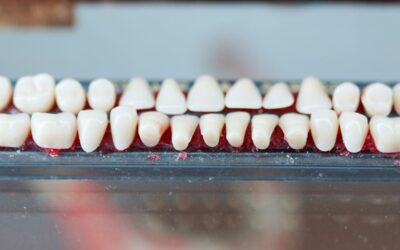Mouth Wash: What’s In It & Does It Really Help?
Mouth Wash: What’s In It & Does It Really Help?

Manufacturers produce a veritable ocean tanker full of mouth washes for our gargling pleasure. These bottles of brightly colour liquids are stacked up on pharmacy and supermarket shelves like an installation awaiting a light show. There are green, blue, purple, and magenta concoctions in a cornucopia of antiseptic brilliance. Their labels promise a plethora of oral antidotes for all sorts of conditions. It is, perhaps, easy to be suspicious of snake oil salesmen and a past full of empty platitudes. Halitosis hardly has to breathe on young love’s promise before these germ killing solutions will slurp it away. Mouth wash: What’s in it and does it really help?
Investigating Mouth Washes
Human history is full of tonics accompanied by health claims. In a selection of several I happened to have in my bathroom cupboard here is what I found. A green one calling itself a freshburst that kills germs that cause bad breath and plaque. Another clear solution in a bottle promises advanced whitening and helps to kill odour causing bacteria that causes bad breath. A blue brew in a bogger bottle proudly proclaims tartar control and likewise helps kill the germs that cause bad breath and plaque. The green liquid advertises itself as an antibacterial mouthwash for a fresher and cleaner mouth than brushing alone. There is the marketing guff but what about the actual ingredients?
What Is Actually In Mouth Wash
Water, alcohol, sorbitol, poloxamer 407, benzoic acid, sodium saccharin, eucalyptol, flavour, thymol, methyl salicylate, sodium benzoate, Cl 4705, Cl 42053. That was the green one and the last two ingredients listed were the colouring agents. The clear solution had hydrogen peroxide in it, which was the whitening agent, plus castor oil, sucralose, sodium fluoride and the other ingredients already in the green one. The blue blend had zinc chloride which would make it blue and the same stuff as the others.
Chemistry Lessons & Concoctions
A brief lesson in chemistry or a refresher from my school days reveals some of the basics. Sodium is salt, saccharin is a sweetener, as is sorbitol and sucralose, methyl salicylate is an analgesic and a flavouring agent, thymol is a preservative and flavouring agent, eucalyptol removes mucus and is a flavouring agent, the alcohol would kill off bacteria, as would sodium benzoate. Poloxamer 407 dissolves oily substances in water.
“Reports of Adverse Effects:
It was reported in The Australian newspaper 18 November 2006 that this common ingredient in toothpaste and mouthwash can cause high cholesterol. A team from the Centre for Ageing and the ANZAC Research Institute in Sydney found that when P407 was given to mice, it coated cells in the liver that control cholesterol levels, leading to a 10-fold increase in levels. The dose administered was 1g/kg by inter-peritoneal injection.”
– Dangers of Mouthwash
Please Remember To Spit It Out
A little mouth wash is no bad thing but it is not advisable to drink a lot of the stuff. It is a mouth wash and, therefore, designed to be gargled and spat out. Do not approach mouth wash with the idea that more is better. These gargles are chemical concoctions and should be treated carefully on this basis. The harmless nature of them is predicated on moderate usage and avoiding over use. My advice is to have half a capful and gargle this for a few minutes. Spit it out and wash your mouth out with lovely pure water. Gargle this and repeat with water.

Mouthwash Matters Analysed
“Mouthwashes are a very popular additional oral hygiene element and there are plenty of individual products, whose compositions are in a state of flux. The aim of our study was to investigate the compositions of mouthwashes and their functions, as well as to discuss their effectiveness in preventing and curing oral diseases and side effects. We searched for mouthwashes available on the market in Poland. We identified 241 individual mouthwash products. The extraction of compositions was performed and functions of the ingredients were assessed. Then, analysis was performed. The evaluation revealed that there are plenty of ingredients, but a typical mouthwash is a water–glycerine mixture and consists of additional sweetener, surfactant, preservative, and some colourant and flavouring agent, as well as usually having two oral health substances, anti-caries sodium fluoride and antimicrobial essential oils.”
– Radzki D, Wilhelm-Węglarz M, Pruska K, Kusiak A, Ordyniec-Kwaśnica I. A Fresh Look at Mouthwashes-What Is Inside and What Is It For? Int J Environ Res Public Health. 2022 Mar 25;19(7):3926. doi: 10.3390/ijerph19073926. PMID: 35409608; PMCID: PMC8997378.
There are warnings and reports about the misuse of mouthwashes by those that drink the substance and the unfortunate things that happen to these people. Deaths are not unusual via the misuse of these by those seeking alcoholic highs from the ingestion of mouth wash. Apparently homeless folk have been known to drink mouth wash in the winter months for the warming sensation it gives them. The consequences of such behaviour, however, is rarely without serious adverse effects on their health.
A History OF Mouth Washing
“A.D. 1: The Romans used to buy bottled Portuguese urine to purge bacteria from the mouth. This practice was so popular that Nero had to place a tax on it. The thought process behind this revolves around the presence of ammonia in urine which aided in disinfection and could whiten teeth. In fact, urine remained one of the most effective ingredients in mouthwashes until the 18th century. A.D. 23: As unhygienic as it sounds, people used to swish tortoise blood around in their mouth at least three times a year to prevent toothaches. Less extreme measures included drinking goat’s milk to maintain good breath or rinsing with white wine. A.D. 40 – 90: Greek surgeon and physician, Pedanius Dioscorides, suggested the mixture of the juice and leaves of olives, milk, gum myrrh, pomegranate, vinegar and wine could help fight bad breath. 12th Century: German philosopher and mystic, Saint Hildegard von Bingen, suggests that swishing pure, cold water around in the mouth can help remove tarter and plaque. 16th Century: Medieval oral hygiene practices centered around a mint and vinegar rinsing solution was believed to rid the mouth of bad breath and germs. 19th Century: Mouthwashes as we know them today, developed in the late 1800s. Instead of rinses containing urine, alcohol was added to help fight germs and bacteria while stabilising the formula. One of the most popular mouthwashes on the market today for its germ-killing qualities, (A well-known mouthwash brand) was invented originally as an antiseptic for surgical procedures and to clean floors.”
– Denise Prichard, 2012
Mouthwash & Brushing Don’t Go Together
Do not use mouth wash immediately following cleaning your teeth with toothpaste, as you are washing away the fluoride residue inside your mouth. Keep these activities separate for best results. Brushing your teeth with a good toothpaste twice a day is recommended. Gargling with mouthwash is something best done more selectively, perhaps a couple of times a week. Do not overdo the mouthwash ritual unless instructed by your local dentist for a specific therapeutic purpose.
Mouthwash Manifesto
Mouth wash: What’s in it and does it really help? Drinking plenty of pure water is a better option if you are concerned about a bacteria build up in your mouth and bad breath. Diet is often a prominent cause of things like bad breath. Discuss this with your dentist for a course of action, treatment plan, and best results. Mouthwash is fine as an adjunct every now and then.
Note: All content and media on the Bacchus Marsh Dental House website and social media channels are created and published online for informational purposes only. It is not intended to be a substitute for professional medical advice and should not be relied on as health or personal advice.
Services we mentioned:
Related Articles
Something Stuck In Your Teeth? It’s The Past And The Future
The porosity of teeth and bones holds blood, sweat and tears and they’re the kind of stories we like to hear about ourselves ... Were you ever lucky enough to have simultaneously channelled Henry Steele Commager through a jangle of accidents, blunders, surprises and...
The Rise And Rise of Living Costs Are Stopping Us Going To The Dentist
Since at least 2019, we seem to be moving from one global crisis to another; we suffer one disturbance and shock after another. We do indeed, live in interesting times. So interesting in fact, that it’s not so much Confucius but confusion around the origin of that...
Periodontal Analysis Benefits from Artificial Intelligence
Artificial Intelligence (AI) is on everybody’s’ lips. AI, it seems, will be the answer to every question and will, possibly, make every current situation better. Humanity has an abiding love affair with a technology, which is ultimately non-human. Perhaps, it speaks...
Dental Tourism: Tijuana Cheaper Dental Procedure? Dubai Veneers For Less?
By guest writer Suzanne Wyhldher It’s a tough decision when the dental work we need is beyond our budget - generally because for some reason the mouth in most countries is treated as separate from the rest of the body. For many people, their mouth is what gets them/us...














